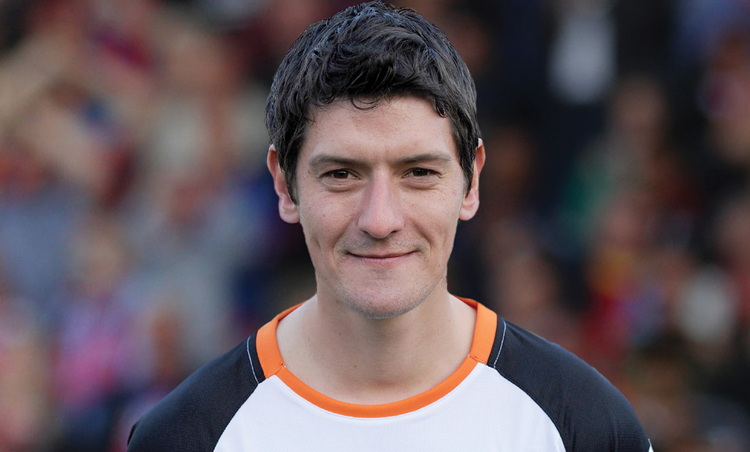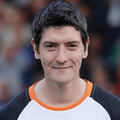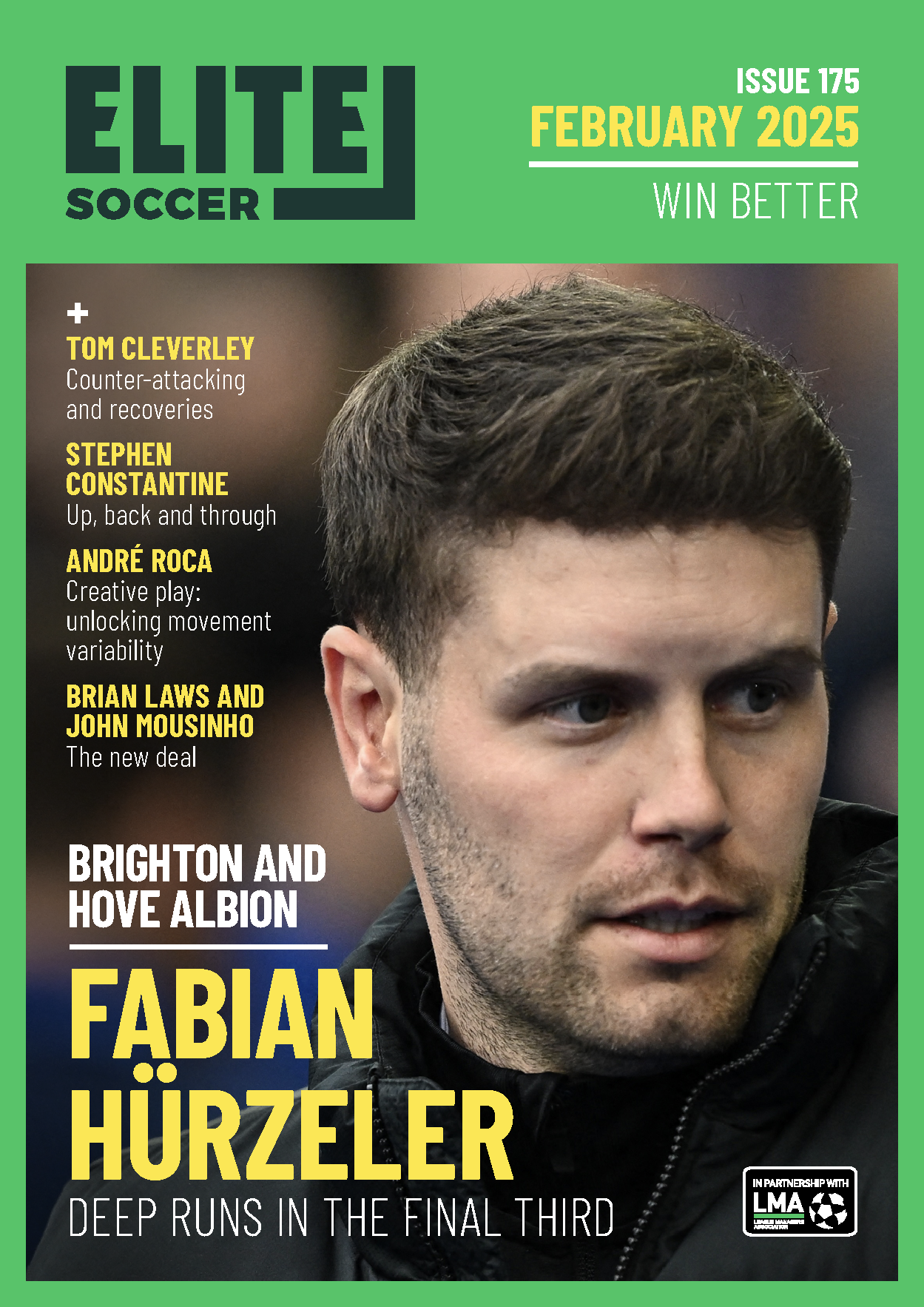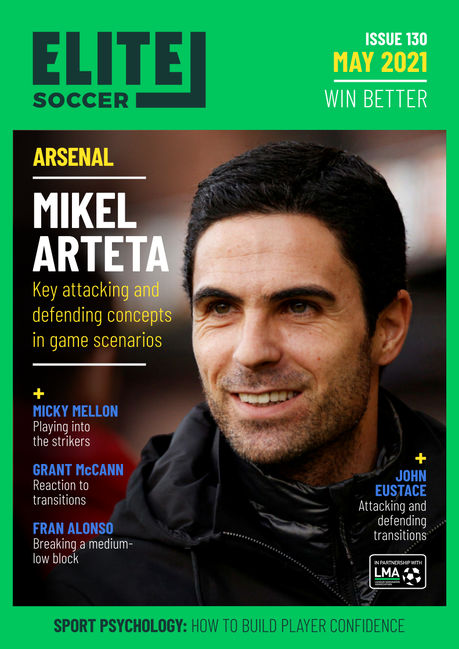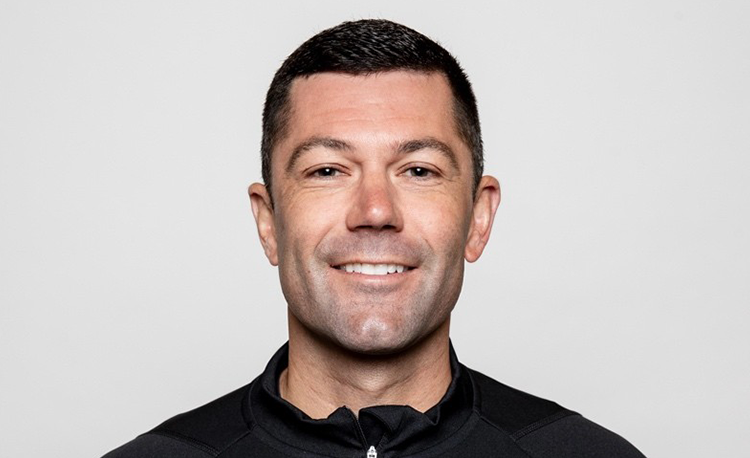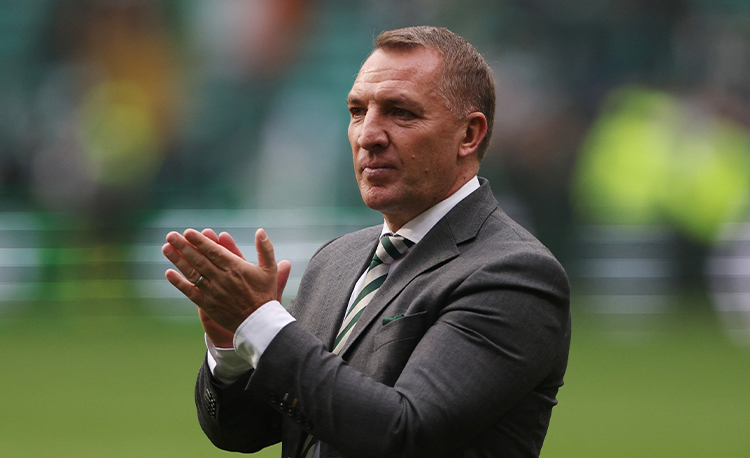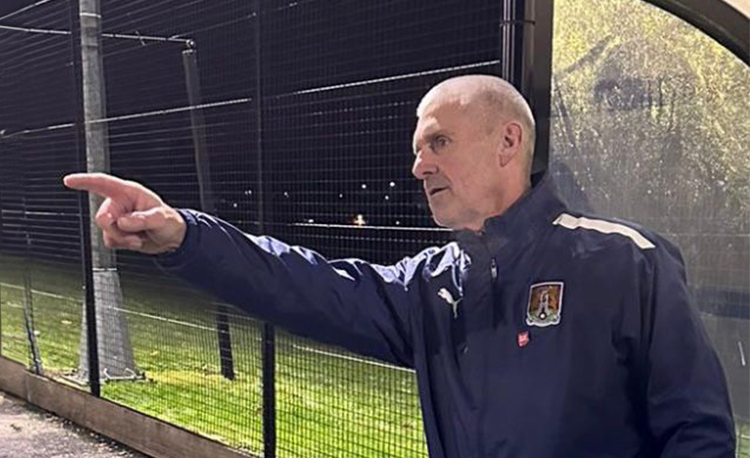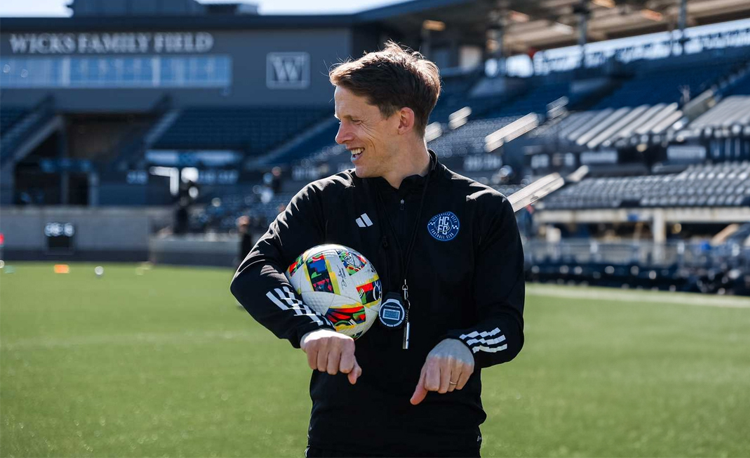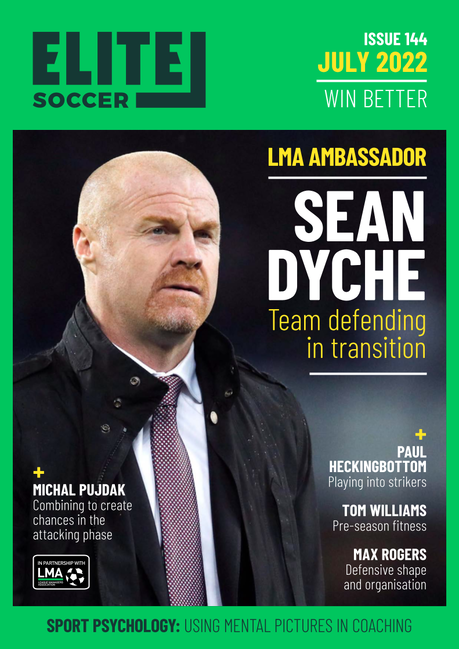You are viewing 1 of your 1 free articles
Pole to pole vision
| Area | 40x30 yards |
| Equipment | Balls, bibs or flags, poles |
| No. of Players | 12 |
This session is about visual awareness, rehearsing players in the idea of looking around and interpreting detail - in essence processing things in their peripheral vision.
It’s important to practise this because every decision in football is based on or influenced by what players see.
Frequently in the Premier League we see players making subtle but intentional visual checks before receiving a pass, so that when the ball does come to them they can switch or develop play immediately, and to devastating effect.
We work this practice for 30 minutes, ending with a 15-minute full-size game.
What do I get the players to do?
A pole is placed in each corner of the area, along with a goal at each end. Poles of one colour are placed at diagonal opposites. On top of these are hung four different coloured flags or bibs.
Each team adopts a 2-3-1 shape (goalkeepers are optional though not used in the example shown). When the reds pass the ball, they must call out the colours of the two flags on the two red poles (1a); and the yellow team likewise the flag colours on the yellow poles (1b). As the game progresses, assistants located around the pitch will swap the flags, so players must stay alert (1c).
The game is fully opposed and each team must make four passes without miscalling a colour before they can score (1d). If a wrong colour is called, possession passes to the other team.
1a
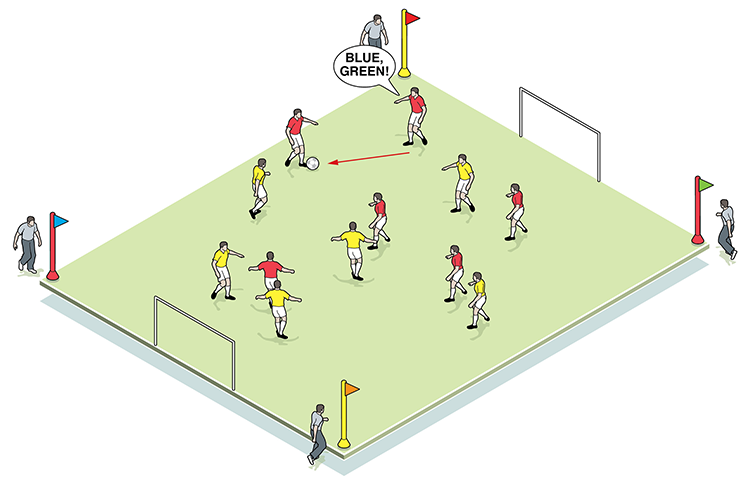
1b
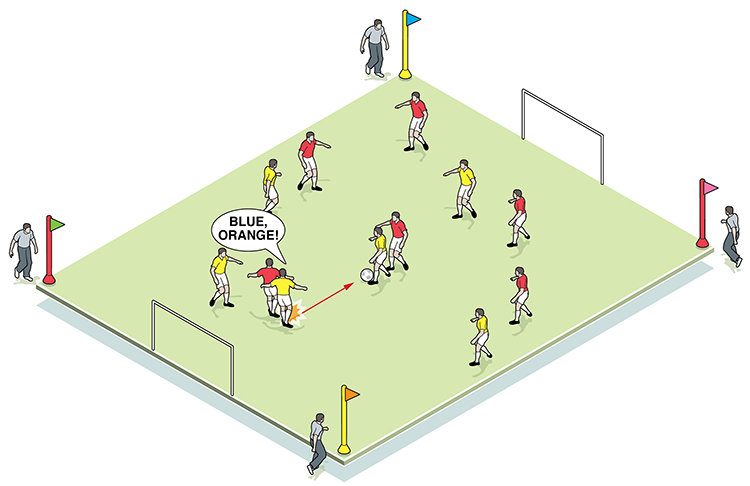
1c
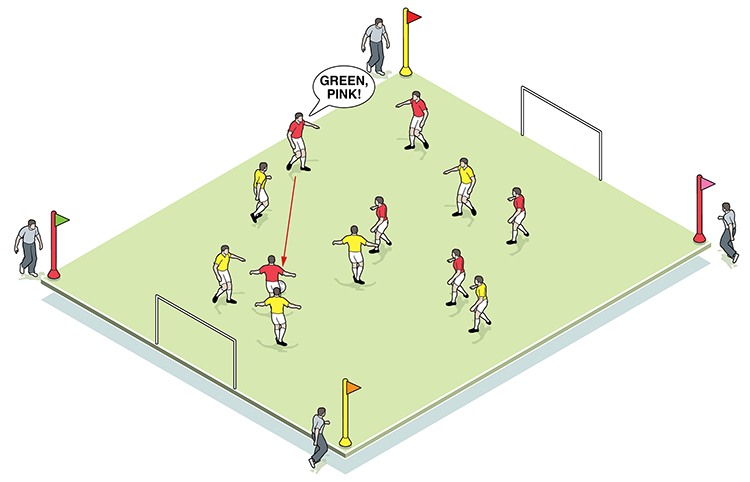
1d
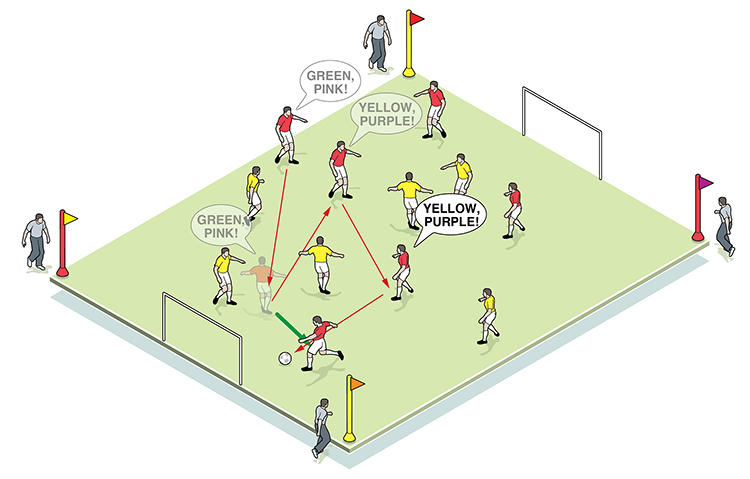
What are the key things to look for technically/tactically?
This is a session based almost entirely on visual awareness. Players should adjust their feet and body in order to adopt a good body shape, and so as to avoid having to spin round to see the flags. And they must still pay attention to good ball control and accurate passing between team mates.
There is a lot to take in at first, but players should relax as the session develops, adapting to the requirements and constantly checking flags when both in and out of possession.
How do I progress the session?
To progress the session, we ask players to call out the flag colours on opposition poles when they receive the ball, as well as their own flag colours when passing. This makes the exercise significantly more difficult, though strengthens the link between physical activity and mental agility (2).
2
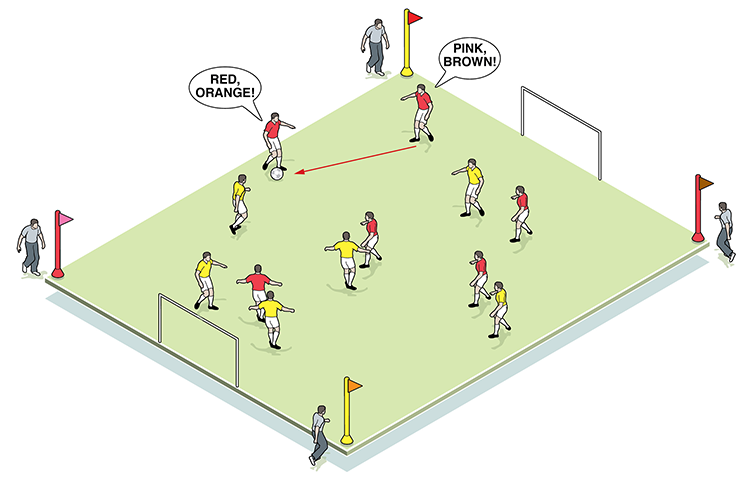
How would you put this into a game situation?
We often find it useful to end the session with a standard 11v11 game, with assistants counting looks made by individual players (3).
You should be looking for players to make a similar number of looks out of possession, as they
do in possession.
It is important that players take the principles learnt into the matchday scenario.
3
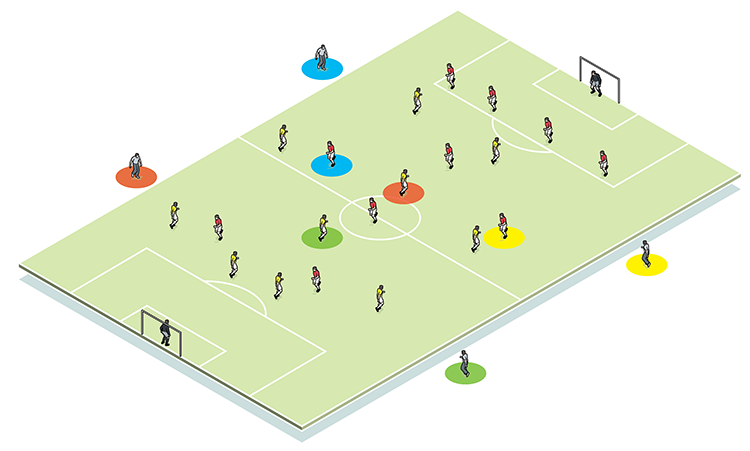
Related Files
Editor's Picks
Deep runs in the final third
Using the goalkeeper in build-up play
Pressing principles
Intensive boxes drill with goals
Penetrating the final third
Creating and finishing
My philosophy
Pressing initiation
Compact team movement
Coaches' Testimonials

Alan Pardew
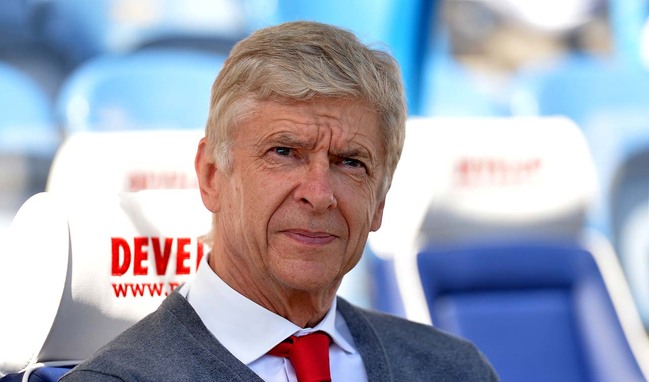
Arsène Wenger

Brendan Rodgers
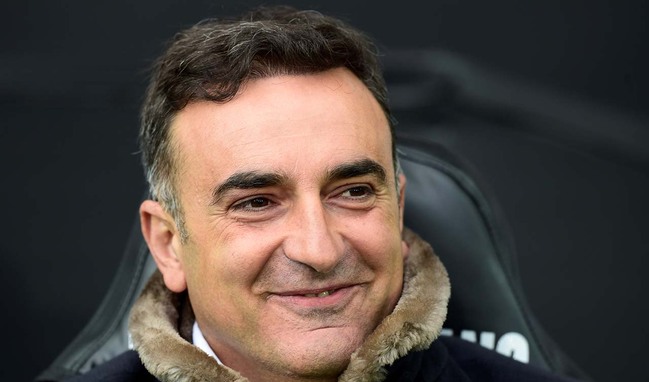
Carlos Carvalhal
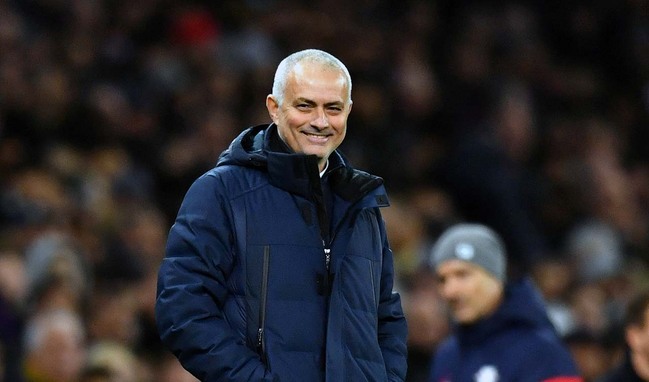
José Mourinho
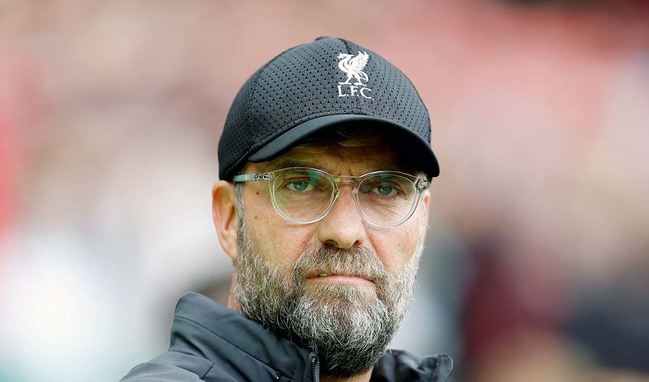
Jürgen Klopp

Pep Guardiola
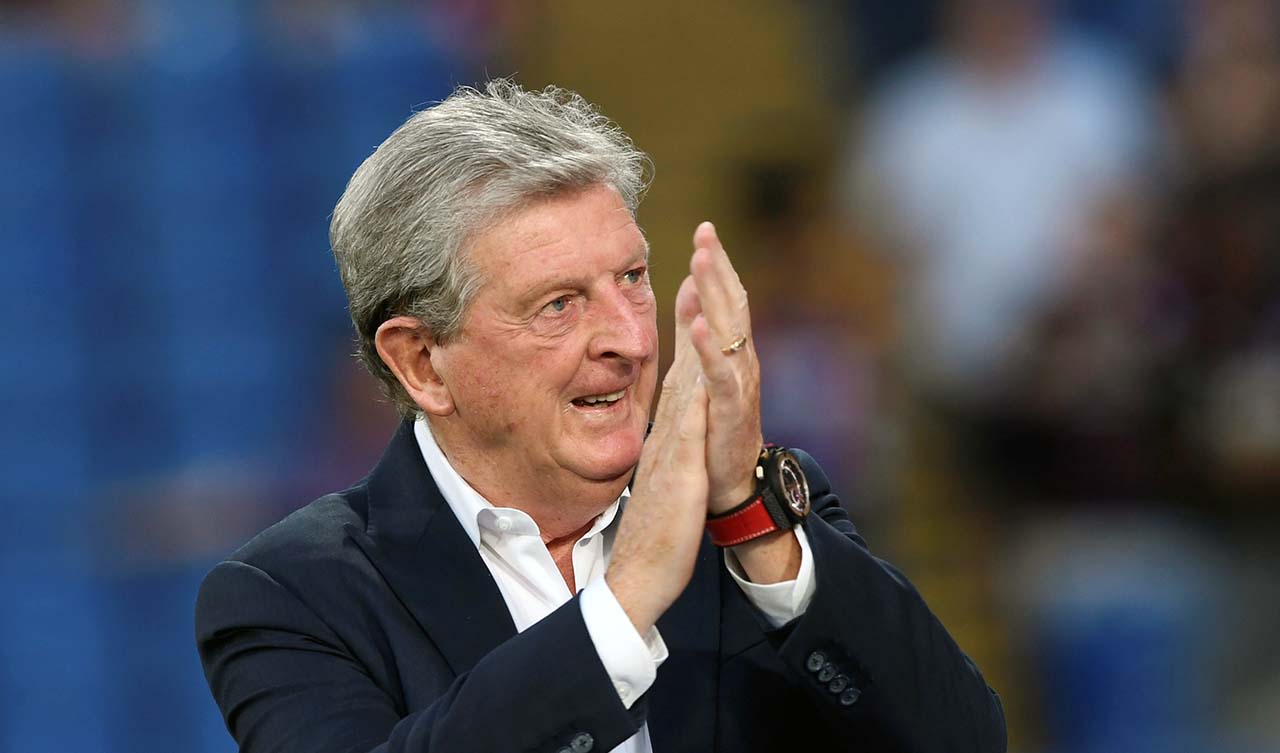
Roy Hodgson
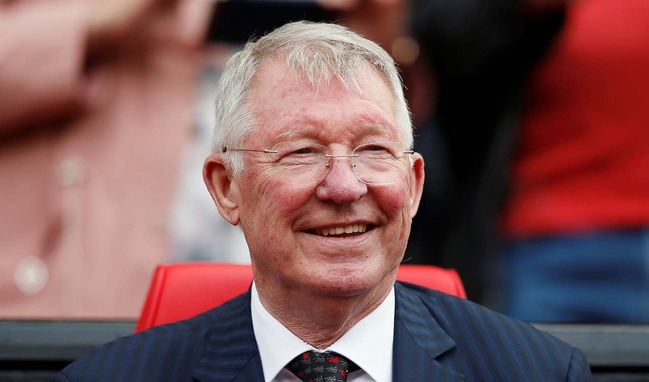
Sir Alex Ferguson
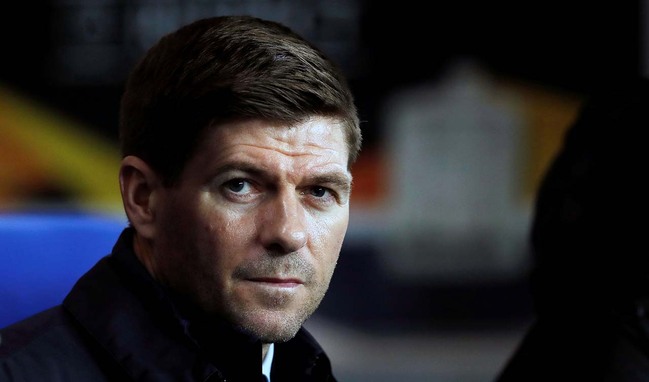
Steven Gerrard
Coaches' Testimonials

Gerald Kearney, Downtown Las Vegas Soccer Club

Paul Butler, Florida, USA

Rick Shields, Springboro, USA

Tony Green, Pierrefonds Titans, Quebec, Canada
Join the world's leading coaches and managers and discover for yourself one of the best kept secrets in coaching. No other training tool on the planet is written or read by the calibre of names you’ll find in Elite Soccer.
In a recent survey 92% of subscribers said Elite Soccer makes them more confident, 89% said it makes them a more effective coach and 91% said it makes them more inspired.
Get Monthly Inspiration
All the latest techniques and approaches
Since 2010 Elite Soccer has given subscribers exclusive insight into the training ground practices of the world’s best coaches. Published in partnership with the League Managers Association we have unparalleled access to the leading lights in the English leagues, as well as a host of international managers.
Elite Soccer exclusively features sessions written by the coaches themselves. There are no observed sessions and no sessions “in the style of”, just first-hand advice delivered direct to you from the coach.
